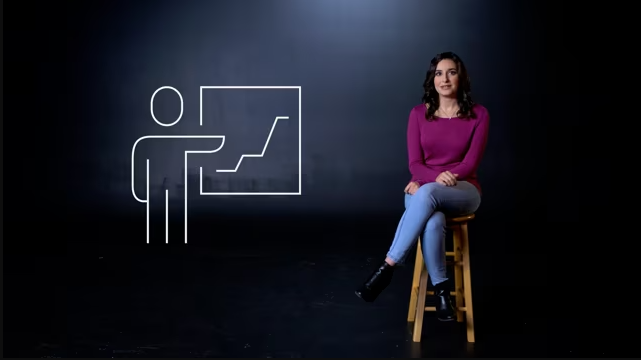Retirement may seem far away, or it might feel like it’s just around the corner. Either way, retirement planning is a multi-step process, and the sooner you set your plan in motion the more time your savings will have to grow – which can help you retire comfortably.
While it’s never too late to begin setting money aside, it’s important to remember that starting to save early is one the most impactful components of a successful retirement strategy. Saving early means you have to save less each month, and your money will have more time to earn income or gains on the earnings that you make in the account (aka compound). Our guide explores the concept of compounding and walks you through the five steps to get started with retirement planning.
Did you know: You have choices when it comes to managing your investments. There are three common options: working with a registered investment advisor, using a robo-advisor, or going the DIY (do-it-yourself) route.
Why it Pays to Start Saving Early: the Power of Compounding
Putting money aside as soon as you’re able to increases your time horizon to build a retirement fund. Your time horizon is the amount of time you have to meet your financial goals and to make up for any losses you might experience, which could happen during a market downturn or if you face an unexpected expense.
Starting to save for retirement now will not only give your money time to grow, it will let you take advantage of the power of compounding, where you earn income on the money you originally saved plus on the income you reinvested. Gains growing on top of other gains! Compounding multiplies your money at an accelerating rate and when you invest early can play a big factor in helping you save more. This resource from the Financial Consumer Agency of Canada shows how you can save much more when you have more years to save.
Our Investment Growth Calculator can help you see how your investments grow over time.
Five Steps to Help Kick-start Your Retirement Planning
1. Understand Your Current Financial Position
One of the first steps toward knowing how much you can tuck away for retirement involves knowing where your finances currently stand.
Gather all the information you have about your finances, such as income, debt, and expenses. This will help you define your financial priorities and what you can afford to put toward your retirement plan.
Of course, financial situations change. Check in with your finances regularly, so your plan can be adjusted.
2. Define Your Financial Priorities
Think about your financial goals. What do you want to achieve with your money – in the short-term and long-term? Do you have financial goals you want to prioritize, such as paying down a high-interest loan, or establishing an emergency fund?
Short-term financial goals have a more limited time horizon. This could mean saving for a car, purchasing furniture, or a winter vacation. Keep in mind, short-term goals can impact your ability to reach long-term goals.
Long-term financial goals have longer time horizons, which may span multiple years or decades. Examples include paying off a mortgage or saving for a child’s education costs, or your retirement.
Depending on your life stage, retirement may be a short- or long-term goal.
3. Develop a Financial Roadmap
Once you’ve thought about your goals, it’s time to create a financial roadmap to achieve them. Consider seeking professional advice at this step. A registered investment advisor will explain how investing could help you achieve your goals and bring the most important things into focus.
CIRO’s Glossary of Financial Certifications provides information about certificates and designations used by advisors in the Canadian financial services industry and will help you choose a professional who is qualified to offer the type of advice, products, and services you need. Be sure to also check an investment advisor’s registration prior to working with them.
Determine How Much Money You Need for Retirement
When creating your retirement plan, set goals that are specific and realistic.
- Realistic goals are more attainable, which may help you stay motivated to reach them.
- Specific goals give clarity on exactly how much you should be saving or investing each month (or year) for retirement.
Essential retirement expenses may include your mortgage or rent, transportation, health care, leisure, groceries, utilities, and insurance.
Work Within a Budget
Budgeting can be a useful tool to help you balance your current income and expenses while helping plan for the future. This Financial Consumer Agency of Canada budget planner can help.
Understand How Risk Tolerance Impacts Your Financial Plan
Your risk tolerance will help shape your goals, especially if you’re considering investing to reach your retirement goals. Generally, the more time you have, the higher level of risk you can afford for the prospect of higher returns down the road. Factors that affect your risk tolerance include:
- Time horizons
- Cash requirements
- Emotional factors
It’s important to understand how much risk you are willing to take when you create your roadmap. Take our Risk Tolerance Test to learn your personal risk profile.
4. Set Your Retirement Plan in Motion
At this point, it’s a good idea to look into saving and investing as vehicles to help you reach your retirement goals. There’s a difference between saving and investing and you may be better suited to one or the other at this point. Learn the key differences in this video, and decide if investing is right for you at this time.
Remember: You don’t need a lot of money to start retirement planning. What feels like a small amount, saved consistently, can build your nest egg over time.
Saving for Retirement with Investments
Investing can help grow your funds.
Saving is traditionally considered safer than investing. At the same time, investing has the potential to generate higher returns in the long term.
Registered investment accounts have tax-deferred or tax-free status by the government, which can help you save more for the future.
A registered account can hold cash and other investment products such as stocks and mutual funds. Registered accounts often used to save for retirement include a Registered Retirement Savings Plan (RRSP), a Tax-Free Savings Account (TFSA), and a Registered Disability Savings Plan (RDSP).
An employer pension plan can also help you achieve retirement goals. You may have heard about two main types of employee pension plans in Canada: defined benefit plan and defined contribution plan. Pension plans usually receive and invest money from your employer (and/or you), which you can access as income during retirement. Employer-sponsored pension plans are a valuable tool to secure your retirement, so check if your workplace offers this benefit. Speak to a human resources representative at your work or a pension plan administrator to find out more about your plan, and the pros and cons of joining the plan.
5. Revisit Your Plan
Retirement planning is an ongoing journey, and the amount you’ll need to save is unique to you. Stay informed and engaged along the way, especially when your financial situation changes.
Use a Financial Checklist To Stay Organized
The Government of Canada provides a retirement financial checklist to help you manage different aspects of retirement planning. The checklist includes:
- Adjusting your budget as you get closer to retiring
- Learning about public pensions, and when you should apply for public pension benefits
- Understanding tax credits you may be eligible for
- Planning or updating a will
Revisiting your retirement plan also means checking in with your financial goals. This can help you stay on track and reflect on your progress. If you’re working with a registered investment advisor, check in with them periodically to see if your retirement plan still works for you.
How Inflation Can Affect Your Retirement Funds
Inflation is the rise in the prices of goods and services. Over time, inflation will increase the cost of goods and services you buy, which reduces the buying power of your money. That’s why it’s important to account for inflation in your retirement plan.
Generally, the buying power of cash, money “kept under the mattress,” or in bank accounts and term deposits, will fall as prices rise due to inflation.
Inflationary times, like the ones we are in now, are the kind of environment that can significantly reduce the value of our retirement savings, and are one reason that you should revisit your financial roadmap on a periodic basis. Changing your investment strategy may reduce the impact of inflation on savings.
This article explains how inflation works inflation in more detail.
Report a Concern
If you have any concerns about a person or company offering an investment opportunity, please contact BCSC Contact Centre at 604-899-6854 or 1-800-373-6393, or through e-mail at [email protected]. You can also file a complaint or submit a tip anonymously using BCSC’s online complaint form.
InvestRight.org is the BC Securities Commission’s investor education website. Subscribe to receive email updates from BCSC InvestRight.



